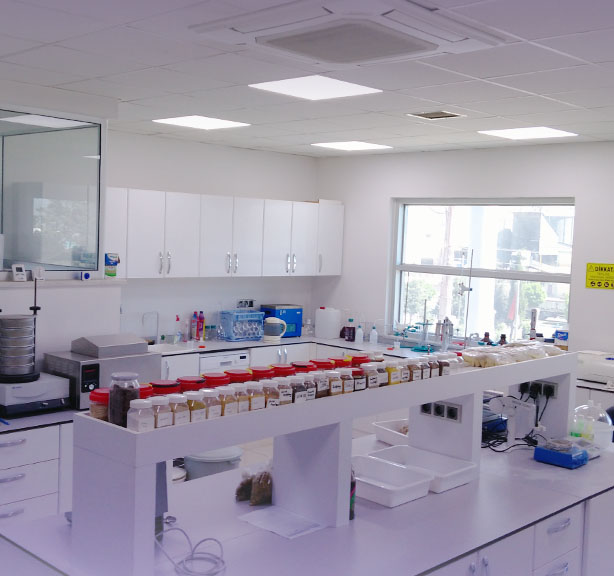
FEED AND RAW MATERIAL ANALYSIS LABORATORY
Animals need many nutrients such as water, carbohydrates, proteins, fats, vitamins, minerals etc. so they can survive their lives and give products like meat, milk and eggs. Animals provide these nutrients from the feed they eat and water they drink. In addition to providing nutrients, feeds have the task of creating a filling material, providing odour and taste elements for animal products, and providing protective features from the disease when necessary.
The nutrient content of the feed is of great importance for animals and for obtaining quality products. Factors that determine nutrient content vary depending on the animal's species and period. When we group animals as cattle, sheep, and poultry, we produce feeds in separate rations for each group and for different periods of animals. The feed quality and its nutritional value is not important only for animals, but also for people who consume products derived from animals.
The production stages of mixed feed production from the harvest to the storage of the feed raw materials used in animal feeds cause the nutritional values of the feeds to change, their physical quality to decrease, the contamination or reprocessing of toxic substances. The most harmful agents in the feed are toxins secreted by bacteria and fungi. Some of the bacteria found in feeds secrete toxins in the feed, while others secrete the animal in the body after the feed is taken by the animals. Toxicological problems are encountered in humans and animals that consume these mycotoxins.
The feed content and energy are determined in our laboratory by analysing the following parameters with national and international reference methods.
These parameters are;
- Humidity
- Crude protein
- Crude fat
- Ash
- Crude fiber
- Starch
- NDF (Neutral Detergent Fibre)
- ADF (Acid Detergent Fibre )
- ADL (Acid Detergent lignin)
Analyses of mycotoxins (aflatoxin etc.) mentioned above that puts the health of animals directly or indirectly in danger and aflatoxin M1 analyses in milk are carried out in our laboratory with international reference methods by HPLC (High Performance Liquid Chromatography).
